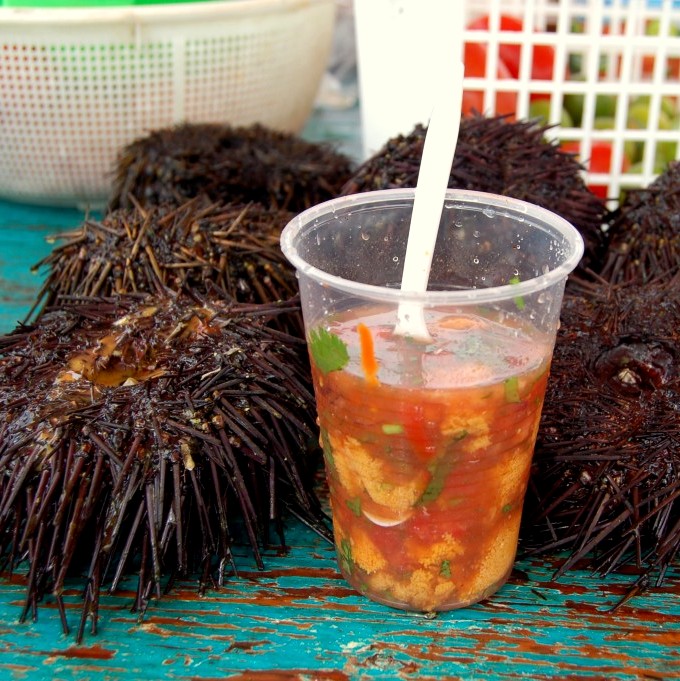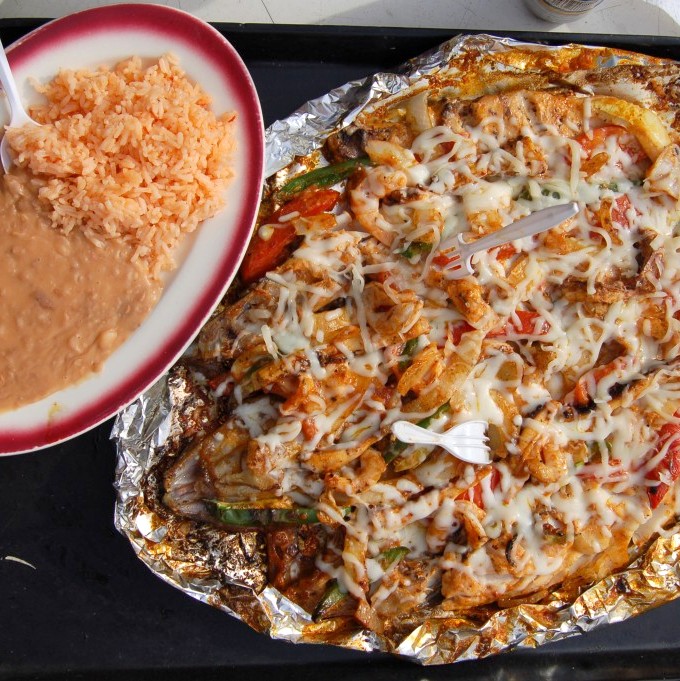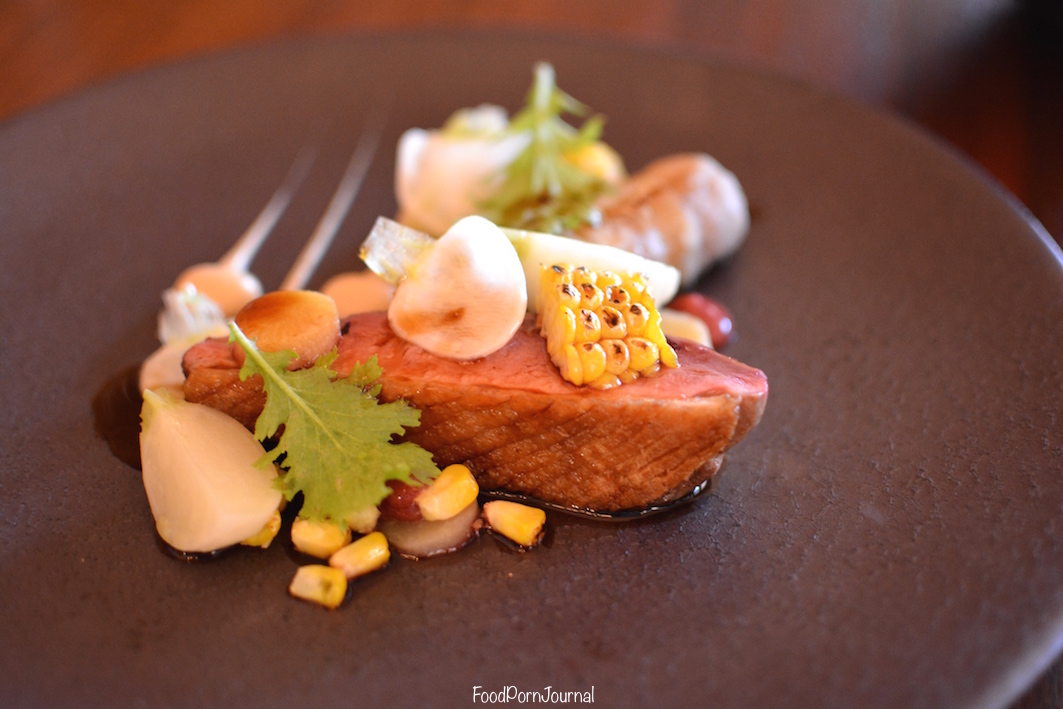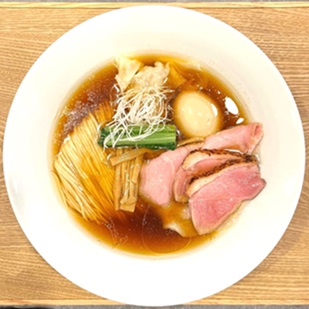7 Essential Eats in the Seafood Village of Popotla, Baja California
Baja California’s Eclectic Mecca of Mariscos
Popotla is often overlooked by north-of-the-border foodies in deference to culinary havens Tijuana to the north and Ensenada to the south. But this tiny, eclectic fishing village outside of Rosarito Beach is THE spot to find some of the freshest mariscos (seafood in Baja California — brought to shore daily by local fishermen and divers, and prepared and served at a variety of stands and restaurants.
Popotla can be overwhelming to the uninitiated, particularly during holidays and on Sundays when it’s swarming with hungry Bajacalifornianos. Dozens of families park their cars right on the beach and grill seafood while kids happily splash away in the surf. There are churros, tamales tostilocos and a myriad of other culinary indulgences available from imaginatively fashioned food carts — one rig is tricked out to resemble a lowrider SUV, complete with a set of bull horns on the front. And if she’s not sleeping, one might catch a glimpse of Filomena, a local’s large pet pig and the unofficial mascot of Popotla.
Navigating Popotla’s seafood stands and markets
Friendly street hawkers converge from all sides in an attempt to lure visitors into their restaurants, guaranteeing the best menu and prices in town. But while all the restaurants and beach stands get their ingredients from the same source – the village’s fishermen and fishmongers – not all are equally adept or imaginative in their preparation.
Before settling into one of the restaurants for lunch, visitors venture down the hill toward the beach to enjoy Popotla’s local color, check out the catch of the day and sample some super fresh shellfish from the mariscos stands and tents that dot the shoreline. This is where Popotla’s beach vendors stock, shuck and prepare a variety of live bivalves for customers to happily slurp right on the beach.
Clams are available in abundance; pismo, chocolate, queen, pata de mula, geoduck and others are brought in by divers from local shores and as far south as Magdalena Bay. Local kumiai oysters and live erizo – sea urchin – are also available on a seasonal basis.
1. Prepared Pismo Clams - El Ray
Pismo clams are found all along the Pacific coast in Alta and Baja California, with the highest concentrations just off shore in San Quintin to the south. Vendors clean the clams and the firm, flavorful white meat is diced and combined with Clamato, lime, chopped red onion, cucumber, tomato and cilantro and served on the half shell. El Ray at the end of the beach is one of the best stands for freshness and variety. Just look for the little blue boat that’s been converted to a raw bar.
2. Prepared Chocolate Clams - Mariscos Mary
Chocolate clams – named for the dark brown color of their shells - aren’t harvested locally, but make the quick journey from central Baja to Popotla, arriving live and ready for preparation and consumption. The taste and texture of the tender white meat and the slightly firmer red meat are complemented by celery, onion, tomato and a touch of Worcestershire sauce. Halfway down the beach, you find a tent full of happy diners at Mariscos “Mary” enjoying a plate of almejas chocolatas.
3. Pata de Mula (Black Clams) - Los Compadres de Sinaloa
The dense pata de mula (mule leg, or black clam) is illegal to sell or serve in the United States due to its increased chance of carrying bacteria. For what it’s worth, the author has had them several times and has never gotten sick. It’s worth the risk for this bivalve delicacy, whose hearty flavor is enhanced with a splash of Worcestershire sauce, a squirt of lime and a little salsa, if desired. Share a dozen or tow with your group in the popular beach popup tent Los Compadres de Sinaloa.
4. Sea Urchin - El Ray
When in season, erizo (sea urchin) can be found in surprising abundance at most of Popotla’s carts. Vendors open the live urchin, gently scoop out the desired golden roe, clean it and add it to a mix of Clamato, lime and a splash of Worcestershire sauce in a plastic cup or in the half shell. During the height of the season, harvested urchins may grow to the size of a beach volleyball. El Ray’s blue wooden boat turned seafood cart is again a good spot for this delicacy.
Popotla’s restaurant scene: Ramshackle with a view
Once Popotla’s shellfish bounty has been sampled, it’s time to visit the beach’s fishmongers and choose lunch from the day’s catch. Grouper, red snapper, sea bass, lingcod, sculpin, corvina, halibut, pargo, yellowtail and others are available in-season, as are shark and manta ray. Simply pick a fish and the vendor – who accepts pesos or US dollars – will package it to go or deliver it directly to the restaurant of your choice.
Popotla’s ramshackle restaurants are perched above the beach on a rocky point overlooking the Pacific Ocean. Don’t expect a high-class dining room and be prepared for a blast of karoke or Norteño from a Sinaloan band during weekends. Do expect relaxed, yet steady service, panoramic views and some of the best seafood preparations you’ve ever tasted.
5. Pescado Zarandeado - Restaurant Atotonilco
Restaurants prepare fish fried, fileted, sautéed, Veracruz style or – my favorite – zarandeado. Originating in the state of Sinaloa, pescado zarandeado involves butterflying the fish, marinating it in a mayonnaise and ancho chili preparation and grilling it in a basket over mesquite. Order with cheese, shrimp and/or octopus on top of the finished fish, if desired, for a serious seafood feast. One of our favorite preparations of this dish comes from Restaurant Atotonilco.
6. Ceviche - Popotla Park Restaurant and Bar
Where there’s fresh fish anywhere in coastal Mexico, ceviche is on the menu. Popotla is no exception. Served Mexican style – cooked in lime and diced with tomato, onion and cilantro – ceviche here is served with tostadas and saltine crackers. Baja Californians like to add a little ketchup to their ceviche as well. Ceviche can also be made to order from fresh fish purchased from the shoreline vendors. The Popotla Park Restaurant and Bar - just south of the beach area on a cliff and an ocean view - offers a variety of ceviche and raw specialties.
7. Spider Crab - Restraurant La Estrella
No visit to Popotla is complete without trying the local spider crab. Referred to as the Marciano (Martian) by the locals, these large rugged crustaceans are only found in Baja California and a few other parts of the world. The local restaurants prepare them fried with butter and garlic. Once the shell is cracked open with a provided lava rock, the abundant meat is sweet, succulent and redolent of the sea. Diners buy live crabs from beach vendors for about $10-$15US each, and establishments like Doña Lorena’s Restaurant La Estrella prepare it in the classic way with a bit of diablo sauce, for a small fee.
Getting there:
Popotla, like many of Baja California’s “hidden” gems, is found at the end of an innocuous dirt road just about 30 minutes south of the US border in San Diego. A dilapidated arch marks the road’s entrance, which runs along the south side of the large Baja Studios lot – where water scenes for the movies “Titanic,” “Master & Commander” and others were filmed. Unless you’re within driving distance, Popotla is best explored as part of a larger culinary agenda that may include Tijuana, Ensenada and the Valle de Guadalupe.
Read more on Popotla:
www.agringoinmexico.com/2014/01/27/popotla-feeding-my-mariscos-madness-again
www.agringoinmexico.com/2013/04/08/somethings-fishy-and-very-tasty-in-popotla
Download the ExtremeFoodies app for the Essential Eats wherever you are on the planet: ExtremeFoodies
For more fantastic foodie content, connect with ExtremeFoodies across social media:
Category:
Recommended features by ExtremeFoodies






